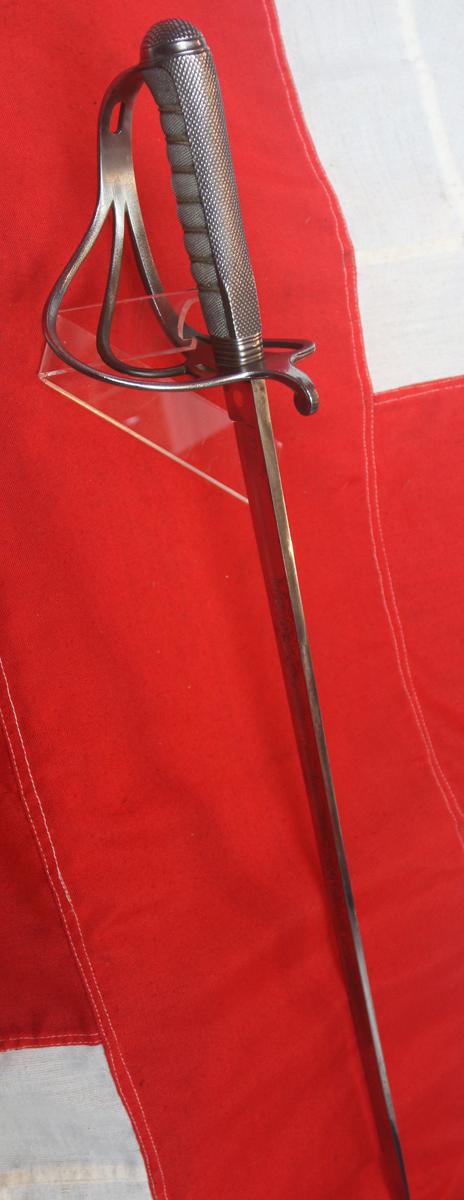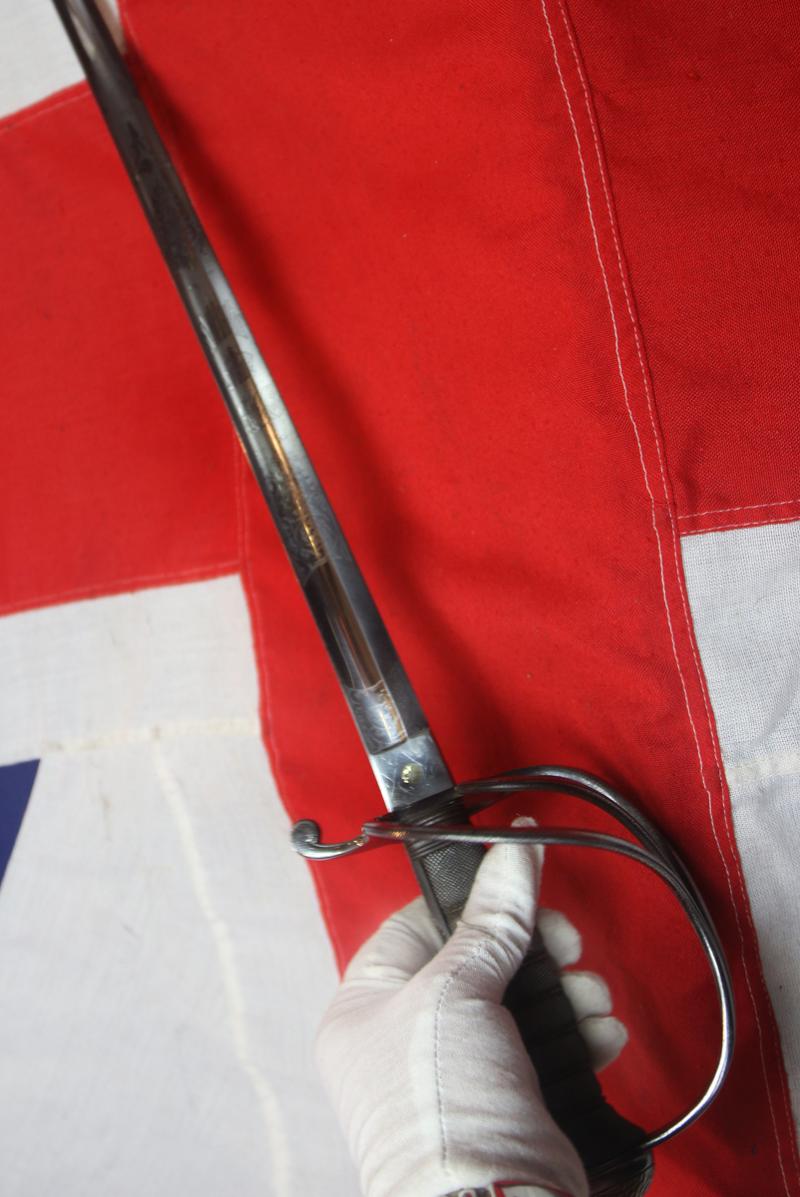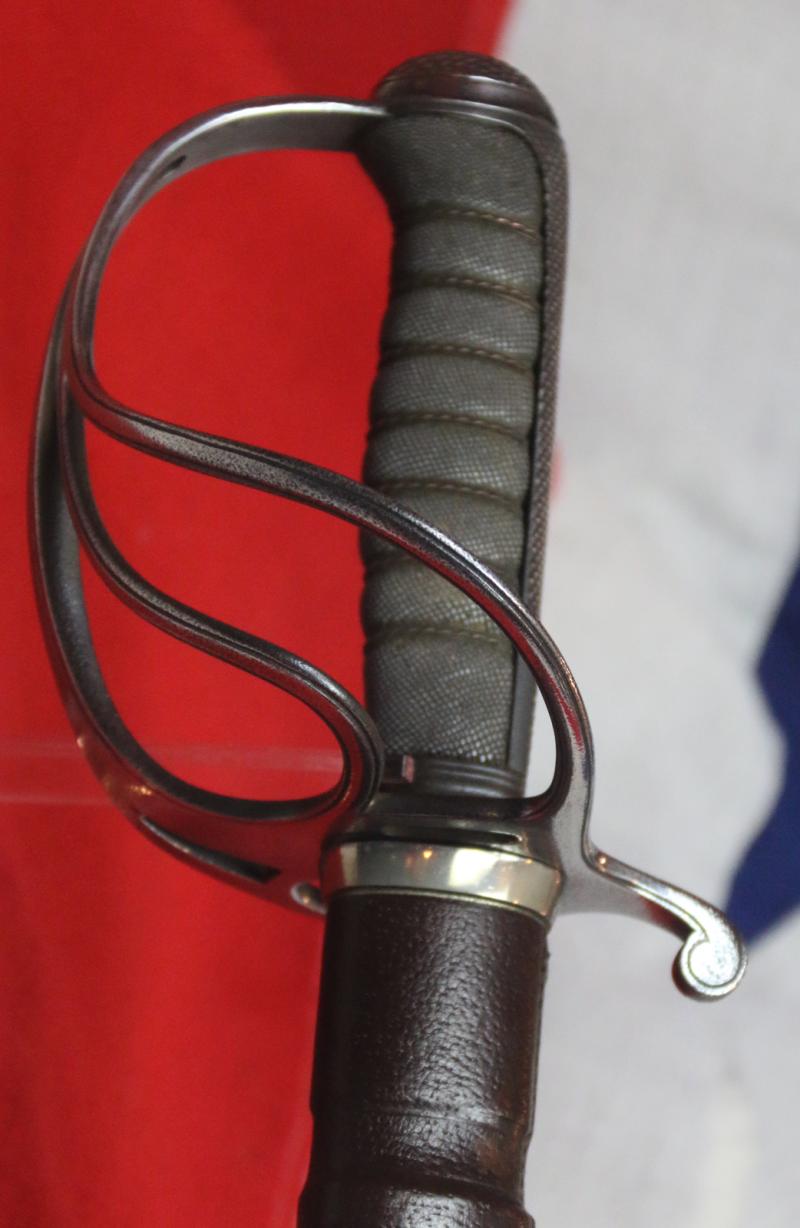A Very Good British Army Officer's Sword WW1, Regimentally Marked for The Army service Corps
With deluxe quality blade, showing traditional royal cypher of King George Vth, and the ASC beneath crown for the Army Service Corps. In its Field Service leather bound wood scabbard. Traditional three bar hilt in steel, full sharkskin triple wire bound grip.
During WW1 it was a most hazardous and perilous corps to be a member of, as it meant every day the officers and men were travelling to the combat front of every single combat region of the trenches. And supply trains and bridges etc. were a fond and useful target of the German air force, and dedicated, concentrated artillery fire, due to the fact that the cutting of supply lines, and eliminating of supply troops to the front could achieve as much effective damage as a huge barrage of artillery against a full line of the British entrenched positions. Thus the corps was awarded many Victoria and George Crosses for valour in the field.
The shortcomings of the supply chains during the early stages of the Crimean War (1854-56), and the ensuing public outrage, persuaded the Army to set up a new supply unit in 1855. This was known as the Land Transport Corps, before changing its name to the Military Train.
Army supply overall, however, was still in the hands of a unit of uniformed civilians known as the Commissariat. In 1869, this merged with the Military Train’s officers to form the Control Department. The Military Train thereby became a unit solely composed of other ranks who were commanded by officers from the Control Department. In 1870, the Military Train was renamed the Army Service Corps.
In 1875, the Control Department split into the Commissariat and Transport Department (CTD) and the Ordnance Store Department (OSD), the latter forming the predecessor to the Royal Army Ordnance Corps. In 1880, the CTD was renamed the Commissariat and Transport Staff (CTS), while the Army Service Corps became the Commissariat and Transport Corps (CTC).
In 1888, the CTS, the CTC and the War Department Fleet merged to form a new Army Service Corps, bringing officers and other ranks back together into one unit. That unit went on to absorb some of the Royal Engineers’ transport duties.
During the First World War, the Army Service Corps (ASC) operated the transport systems that delivered ammunition, food and equipment to the Front Line. The ASC used motor vehicles, the railways and waterways as part of a complex supply line linking Britain to the various Fronts. As this poster demonstrates, despite the increasing mechanization of warfare, much reliance was also made on horse-drawn transport.
Code: 25057










